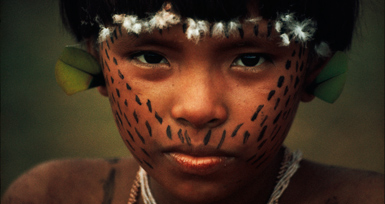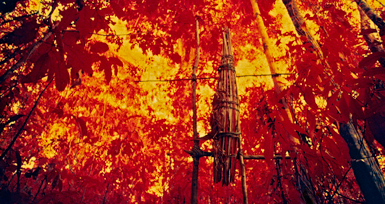Since the beginning of her career, Andujar has been interested in themes and groups that are outsiders in the dominant culture—from patients of a psychiatric hospital to people who participate in séances—, depicting the vital power of the photographed characters. Her activity as photojournalist first took her to visit the Carajás people and, in 1971, to be in touch with the then recently-contacted Yanomami people. Her production is recognized worldwide and is part of the collections of the most prominent museums in the world, such as the MoMA, in New York; the Maison Européene de la Photographie, in Paris; and the Instituto Inhotim, in Brumadinho, Brazil. She has published Marcados (2009), A Vulnerabilidade do Ser (2005), and Yanomami (1998), among others. She lives and works in São Paulo.
1971-1972, slideshow with selected images from the book Amazônia
courtesy of Galeria Vermelho
1976, photograph, 150x100cm
courtesy of Galeria Vermelho
Published for the first time in the book Amazônia — a partnership with George Love and currently out of print—this set of images records a fragment of the forest in its human, animal, and vegetal complexity. The sequence projected in the slideshow records a Yanomami group in a playful moment in the forest. Differently from what is seen in the artist’s most famous series, here the bodies before the camera create delicate images in which the Yanomamis play and talk, as if sharing a familiar space. Casulo humano, in turn, shows part of a Yanomami death rite, in which the body is placed in a sort of cocoon attached to a wooden structure in the forest, where it remains until it is entirely dry to then be cremated; the ashes are mixed into a porridge to be eaten by relatives.


